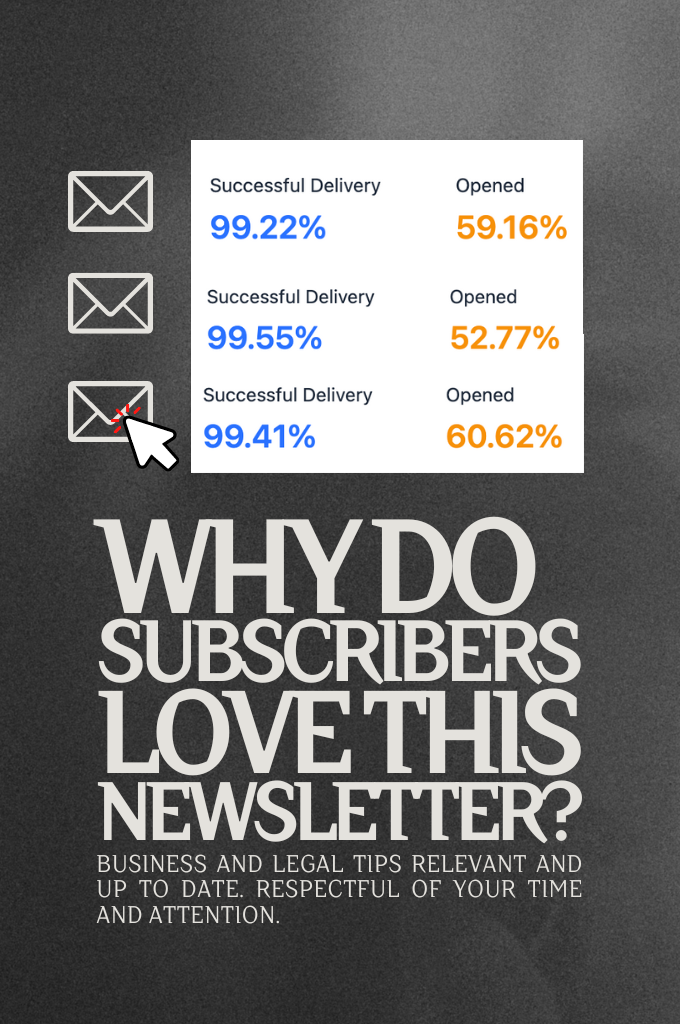Four Simple Steps to a Solid Business Plan
I wish there was a secret recipe to making a successful business. On Instagram I frequently see “inspirational” posts saying, “if you ___ your business will succeed this year!” Sadly, there is no guarantee. But an old friend of mine loved to say, “You can get lucky once in a while, but you can be smart every day.” Being smart helps, so does hard work and patience is another contributor to success. But one of the best ways to give your business idea a fighting chance is a business plan.
“You can get lucky once in a while, but you can be smart every day.”
There are business plan templates all over the web, and when I was in business school, we had to make our own, but all of them make the plan difficult. I received top marks for mine and it was 60 pages long. This is TOO COMPLEX for most businesses and it’s not really necessary.
Here is an easy business plan guide in four steps. Doing these four steps gives your business a much better chance of success.
Step 1: Define the problem your business wants to solve
Every business starts with a problem, often an unmet need. The founder says to themself, “I bet I can make this better.” Sometimes this is a conscious statement, sometimes it’s unconscious. Here are some examples:
- I know how to install cabinets and there just aren’t enough people in the area doing this kind of work
- People want a portrait photographer who can blend modern and traditional styles
- It takes four months to get an appointment and the demand is growing
You want a ROUGH DRAFT, because as you do the following steps, your thoughts on this will change.
Here’s an early version of my problem definition:
Small business owners hate calling a lawyer so they put it off until their little problems grow too big to ignore. If talking to a lawyer were affordable and easy, they’d address their problems while they’re small and easy to solve.
Attorney Matthew Nuzum’s initial problem statement
When you think about your problem this way, then you can focus in on how you can solve it and not get distracted by the thousands of other things competing for your attention. For example, I needed to focus on overcoming the fear of calling a lawyer, how to help people not feel shame that they’re experiencing a legal problem, how to make it easy to contact me and how to keep my costs low.
Step 2: Make a budget
If you download a business plan template, this is usually one of the last things suggested. Yet in my experience, this is one of the most important aspects. Most businesses fail because of money problems. Your startup costs, how much money you have available, and how long it will take to be profitable, affect all of the other issues in your business plan.
First, how much money do you need to live on during the startup phase? During this period, you figure out the lowest amount you need to cover your basic needs. This is a personal or family budget, not a business budget. For example, maybe you currently earn $6,500 per month but if you cut back, you could live on $4,500 per month. Keep track of this number.
Second, figure out what you’ll need to spend money on before you can serve your first customer. Do you need a storefront? Do you need tools? Do you need computer software? List these things out and get estimates of the costs. There is a concept called the “Lean Startup,” which suggests keeping your startup costs very low. For a lot of businesses, this is a good plan. Sadly, not everyone can do that.
Be careful of these two things:
- Spending money on things you will need later but not now
- Making long-term commitments before you know your long-term needs
Third, decide on how much work it will take to make a customer happy. For example, if you install cabinets, you may estimate that it takes 10 hours to install and 10 hours to measure, order and plan the installation. If you are a photographer, you may budget 3 hours with the subject and 6 hours at the desk. If you are uncertain, add extra time.
Fourth, figure out how much profit you need per customer. Take the number of hours you want to work and divide it by the number of hours it takes to make a customer happy. That’s the number of customers you can serve in a period of time. Now, divide the amount of money you need to make by the number of customers you can serve. That’s how much money you need to make per customer. It is usually more than you expected. Here’s an example:
- Work hours per day: 9
- Work days per month: 22
- Work hours per month: 200 (which is 9 x 22 = 198 rounded up)
- First financial goal: $6,000 per month
- Hours to satisfy a customer: 10
- Amount customer per month: 200 hours per month ÷ 10 hours per customer = 20 customer per month
- Money per customer needed: $6,000 per month divided by 20 customers per month = $300 profit per customer
IMPORTANT: Take this number and multiply it by 1.5. $300 x 1.5 = $450 profit per customer. You need to do this or you will lose money when it comes time to pay taxes and when you get surprise bills. If your business deals with high losses, for example a restaurant dealing with food waste, multiply it by a higher number.
Also, pay attention that this is profit. So you take the amount you need to earn and then add the cost of materials to it. Some businesses have very low material cost—for example, digital photographers can buy their camera equipment once and use it again and again. But if you install cabinets, you need to add the cost for screws, glue and the actual cabinets onto that number.
Step 3: Who are your ideal customers?
It is important to understand who your customers are so that you can be sure the product you’re creating will work for them. This is a great time to be creative and also to rethink the decisions you made in steps 1 and 2 above.
If you are a photographer and the numbers above fit your business, and you need to earn $450 per customer, then you will have to figure out what kinds of people are willing to spend $450 on a photographer and what kinds of service you need to offer them. You may realize that the kinds of customers who spend $450 expect that to include some extras that you didn’t consider in your budget. Do not take a pay cut to meet their needs—instead, consider how you can raise your price if you need to.
Maybe your ideal customers do not have much money. If you are a photographer and you want to take family pictures that target people who want to spend $150 rather than $450, you will need to figure out how to reduce the number of hours it takes to make them happy.
Now is a good time to talk to people who fit your ideal customer profile. Tell them about the problem you’re trying to solve and then listen to what they say. 99% of the time you will realize that they want a slightly different solution than you planned for. This is good—CHANGE YOUR PLAN! If you talk to five to ten ideal customers you will learn what they’re really willing to pay for. You may even be able to sign them up as beta users on the spot.
While researching your users, you want to understand how valuable your solution to the problem is. You can use this to set prices. Listen carefully for signals that people are willing to pay more for special treatment. You never want to miss an opportunity to provide a more valuable (and more expensive) service. For example, “both of us work day jobs and our kids have sports on the weekends, so we need to meet after work, but nobody works evenings.” Or, “I’ve tried other products but they just don’t last. Why is it so hard to find quality?”
Here’s an example of one of my target customers:
Small business owners with ten or less employees. They often work way more than 40 hours per week and deal with many kinds of business risks, such as liability, employee problems, and customers not paying on time. They don’t like surprise bills and appreciate meeting by phone or outside normal working hours.
One of Attorney Matthew Nuzum’s typical clients
Step 4: Create a Marketing Plan
A marketing plan sounds fancy, but it just means this: How will your ideal customer learn about you and the services you offer?
If you do family portraits, you may find that social media sharing is the best way. If you’re a restaurant, you may decide Yelp! or GrubHub is a good choice. For many businesses, a Google listing is great.
You also need to know what it is that you can talk about that will connect with your typical customers. If you’re targeting high end customers, you probably don’t want to talk about how cheap you are—instead, talk about quality, or investment. If you want to reach young people, consider talking about how fun or cutting edge your service is. If you want to reach price-conscious customers, talk about the value or how much they save.
I think at this point in time, everyone needs at a least a simple one-page website and a Google listing. The good news is you can get this for free, but you may find it a good investment to pay someone to do it. Social media can be nice to have, but the number one rule of social media is that it needs to be social. Creating an account and leaving it dormant doesn’t help you. If you don’t like using social media, then either outsource it or leave it alone.
When you start your business, you will be overwhelmed with offers for discounts on marketing. I know a lot of businesses who close because they wasted money on useless ads. Everything you do for marketing should be built around the problem you’re trying to solve and the ideal customer you want to find. If someone says, “hey, for $200 you can be listed on my website!” ask yourself, “how will this help my target customer solve the problem I can help them with?” Don’t waste your money on things that don’t have a clear answer to it, especially SEO claims. And don’t be afraid to spend your money on things that are highly focused on your goals.
The Short Version
- Start by defining a problem you want to solve
- Work on a personal and business budget so that you know how much you need to earn
- Identify who your ideal customers are
- Figure out how you can connect with them
I’m an Iowa lawyer passionately focused on small business needs. I’d love to talk about your business and how I can help you manage your legal risks.


